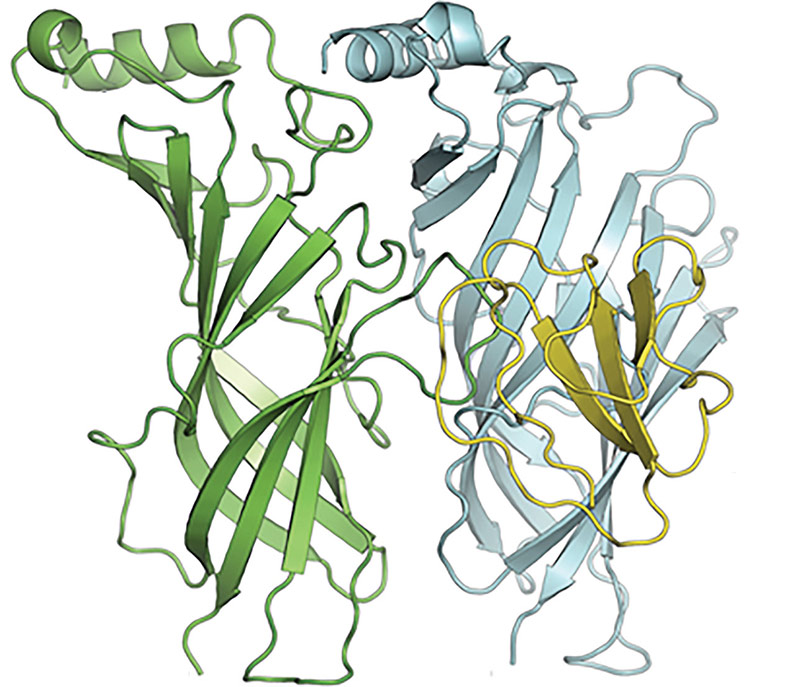
Why do certain proteins in the body bind with some substances but not with others?
|
Illustration: “Augmenting the antinociceptive effects of nicotinic acetylcholine receptor activity through lynx1 modulation,” Nissen et al., (2018) PLoS One, 13(7): e0199643. CC BY 4.0 |
The answer could be the difference between a drug working or not. The answer, however, is elusive by virtue of the sheer scope of mutations that make proteins vary between each other and between individuals.
“Amino acids are the building blocks of proteins, and my copy of a protein might have just one that is different than yours,” says Brian Chen, an associate professor of computer science and engineering. “But there are many different ways that one amino acid may change, and there are many different amino acids that may potentially change. So the natural question is, why don’t you test all the possibilities? Well, that would be a combinatorial nightmare. There are just too many possibilities to test in a wet lab, too many possibilities for a human to simulate on a computer, and too many possibilities for a person to keep straight in their head and consider in a systematic way.”
Currently, researchers must review the data and do their best to interpret whether or not proteins are interacting and how.
Supported by a four-year, nearly $1 million grant recently awarded by the National Institutes of Health, Chen is developing software that can both handle the scale of possibilities and replace human interpretation of that data. But in a novel twist, the software will also generate an English-language translation that will explain the mechanism behind protein interaction or noninteraction. In other words, it will tell the re-searcher what it thinks is happening.
“The software provides the mutations to investigate and the reasons why it thinks those mutations are significant,” says Chen. “In essence, it allows us to reduce the scope of testing because it gives a rationale for that testing.”
The software will eventually utilize four of the biophysical mechanisms that control protein interactions—shape complementarity, electrostatic complementarity, hydrogen bonding, and hydrophobicity. It currently uses the first two.
Chen’s NIH grant will support the continued development and testing of the software, the latter of which will be done in collaboration with Julie Miwa, an associate professor of neuroscience in Lehigh’s College of Arts and Sciences. Miwa’s lab studies the interaction between lynx proteins and nicotinic acetylcholine receptors in the brain.
“One of the questions that comes up in her research is, do certain variations of these lynx proteins turn the receptors on or off? And that’s really important because it’s believed that lynx mutations affect neuro-plasticity,” explains Chen. “Discovering new mutations that affect this interaction could shed light on the mechanisms that affect learning and anxiety. But there are hundreds of possibilities. So I’ll be using my software to suggest mutations that could interrupt binding between the lynx and acetylcholine receptors. It’s a great opportunity to validate our software because it’s a completely blind scenario, and a great opportunity to assist Dr. Miwa’s study of the lynx family of proteins. We don’t know which amino acids are going to be important, but her team will reveal if we were right or wrong when they find the biological truth.”
The ultimate goal of this research, he says, is for the software to utilize more than four biophysical mechanisms in its predictions and to provide even more robust explanations for why mutations might affect binding. He also looks forward to more opportunities for collaboration, especially with students, in this work that he calls “super exciting” and “deeply fascinating.”
“The interest in research among undergraduates here at Lehigh is really high,” says Chen, “and it has allowed me to get a lot of research done on this specific project that I otherwise would not have been able to do, specifically in terms of evidence and validation. I think undergraduate research is one of the great strengths of this university.”

